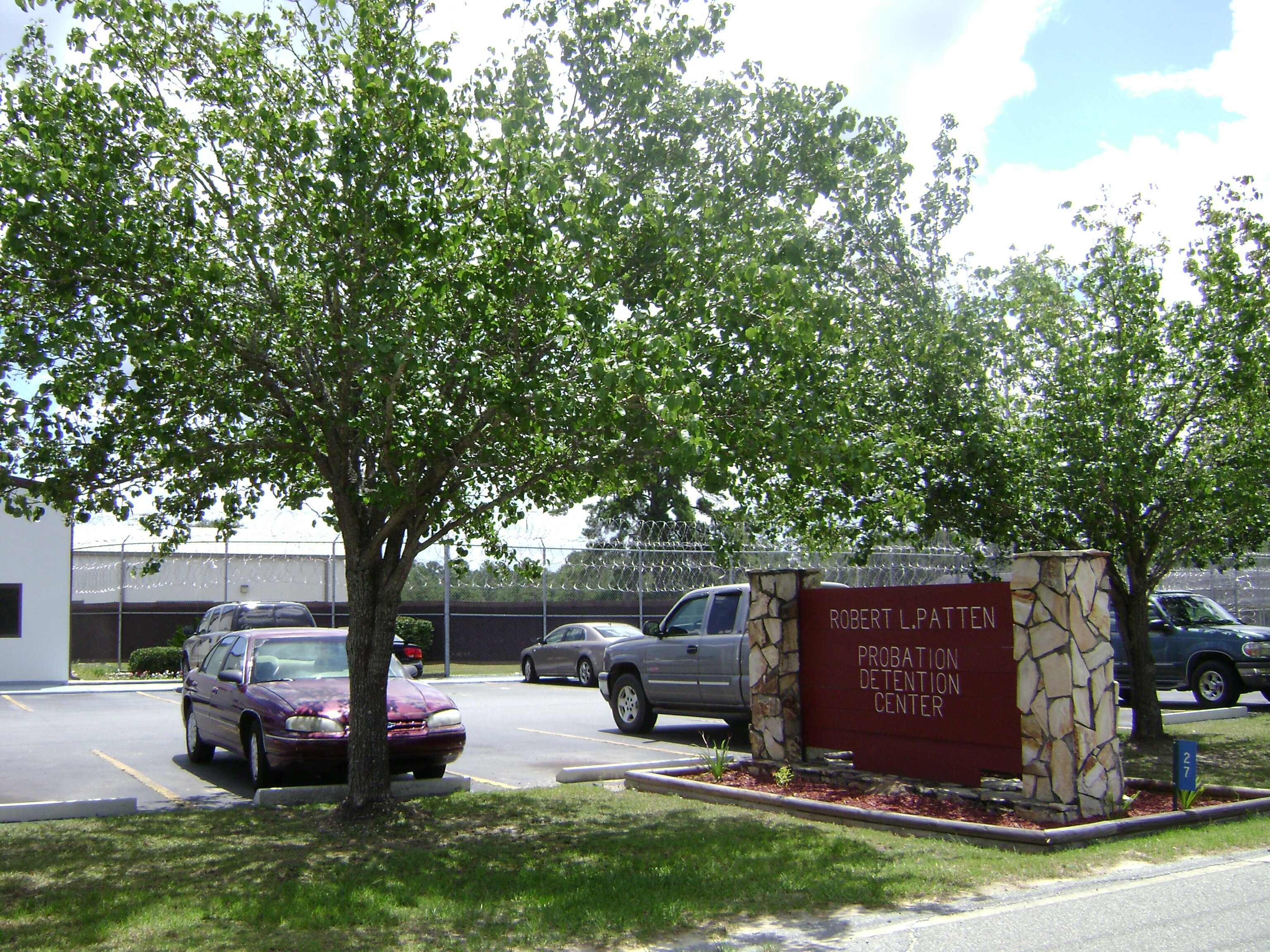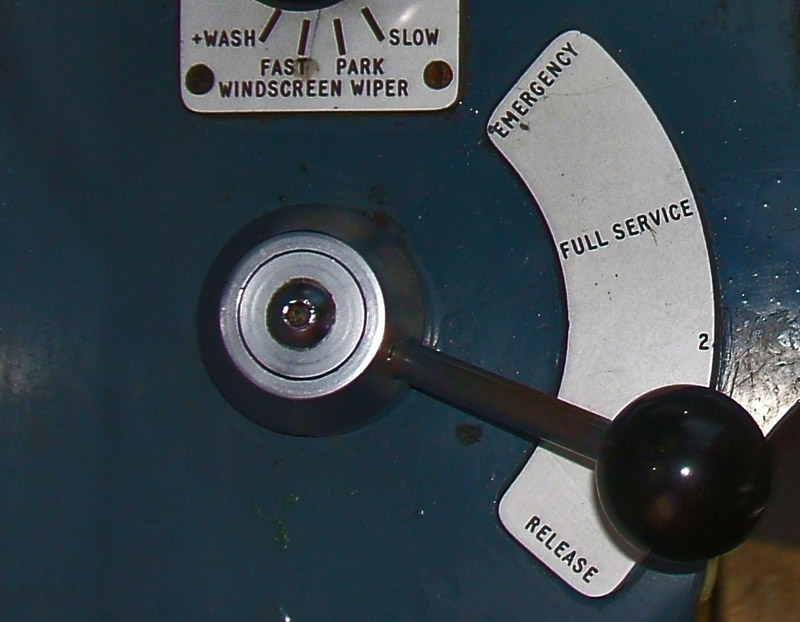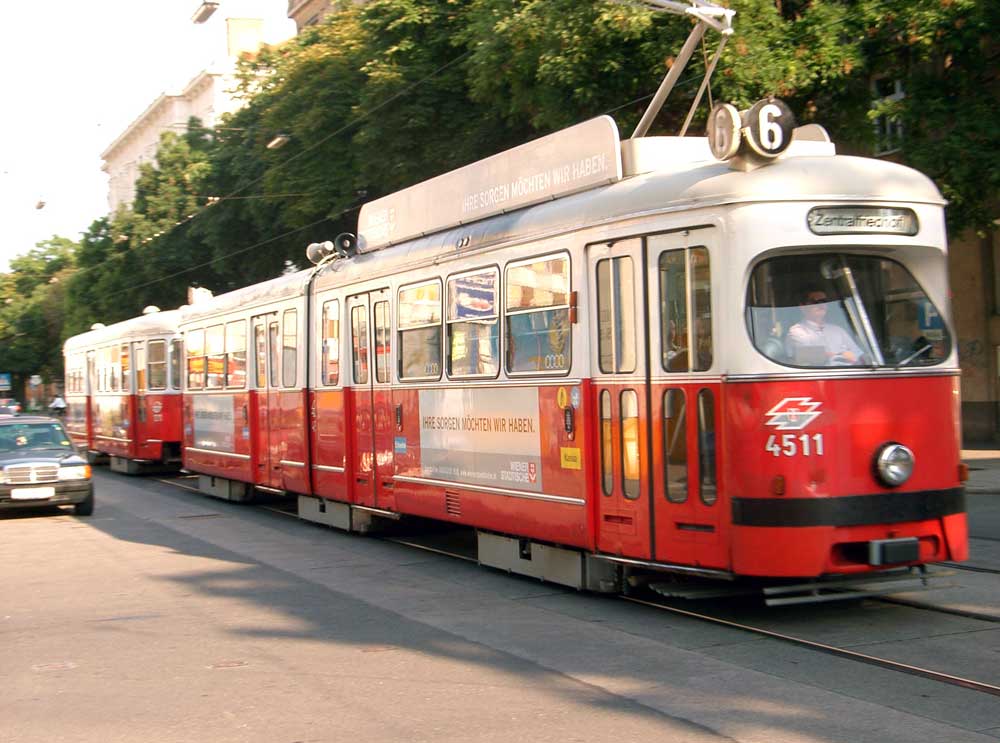|
Garmisch-Partenkirchen Train Collision
The Garmisch-Partenkirchen train collision took place on 12 December 1995, when an ÖBB Regional-Express train traveling from Innsbruck to Munich departed from Garmisch-Partenkirchen Station in Bavaria despite a red light due to distraction, colliding with a DB tourist train, killing one person and injuring 51. Background The first train was Regional-Express (RE) number 3612, pulled by the ÖBB 1044 235 electric locomotive, a scheduled train running from Innsbruck HBF to Munich HBF, with a regular 10-minute stop at the Garmisch-Partenkirchen railway station. The second train was a well-known DB Class 491 001 "Glass Train", a tourist train operated by Deutsche Bahn running a chartered service that day on the Mittenwald Line, and traveling in the opposite direction. Because the line was single-tracked, the Glass Train was scheduled to pass through the central track at Garmisch-Partenkirchen Station, while the RE3612 train waited at the station siding before continuing onward. ... [...More Info...] [...Related Items...] OR: [Wikipedia] [Google] [Baidu] |
Nürnberg
Nuremberg ( ; german: link=no, Nürnberg ; in the local East Franconian dialect: ''Nämberch'' ) is the second-largest city of the German state of Bavaria after its capital Munich, and its 518,370 (2019) inhabitants make it the 14th-largest city in Germany. On the Pegnitz River (from its confluence with the Rednitz in Fürth onwards: Regnitz, a tributary of the River Main) and the Rhine–Main–Danube Canal, it lies in the Bavarian administrative region of Middle Franconia, and is the largest city and the unofficial capital of Franconia. Nuremberg forms with the neighbouring cities of Fürth, Erlangen and Schwabach a continuous conurbation with a total population of 800,376 (2019), which is the heart of the urban area region with around 1.4 million inhabitants, while the larger Nuremberg Metropolitan Region has approximately 3.6 million inhabitants. The city lies about north of Munich. It is the largest city in the East Franconian dialect area (colloquially: "Franconian"; ... [...More Info...] [...Related Items...] OR: [Wikipedia] [Google] [Baidu] |
München Hauptbahnhof
München Hauptbahnhof or Munich Central Station is the main railway station in the city of Munich, Germany. It is one of the three stations with long-distance services in Munich, the others being Munich East station (''München Ost'') and Munich-Pasing station (''München-Pasing''). München Hauptbahnhof sees about 450,000 passengers a day, which puts it on par with other large stations in Germany, such as Hamburg Hauptbahnhof and Frankfurt (Main) Hauptbahnhof. It is classified by Deutsche Bahn as a category 1 station, one of 21 in Germany and two in Munich, the other being ''München Ost''. The mainline station is a terminal station with 32 platforms. The subterranean S-Bahn with 2 platforms and U-Bahn stations with 6 platforms are through stations. The first Munich station was built about to the west in 1839. A station at the current site was opened in 1849 and it has been rebuilt numerous times, including to replace the main station building, which was badly damaged during W ... [...More Info...] [...Related Items...] OR: [Wikipedia] [Google] [Baidu] |
Probation
Probation in criminal law is a period of supervision over an offender, ordered by the court often in lieu of incarceration. In some jurisdictions, the term ''probation'' applies only to community sentences (alternatives to incarceration), such as suspended sentences. In others, probation also includes supervision of those conditionally released from prison on parole. An offender on probation is ordered to follow certain conditions set forth by the court, often under the supervision of a probation officer. During the period of probation, an offender faces the threat of being incarcerated if found breaking the rules set by the court or probation officer. Offenders are ordinarily required to maintain law-abiding behavior, and may be ordered to refrain from possession of firearms, remain employed, participate in an educational program, abide a curfew, live at a directed place, obey the orders of the probation officer, or not leave the jurisdiction. The probationer might be ordere ... [...More Info...] [...Related Items...] OR: [Wikipedia] [Google] [Baidu] |
Emergency Brake (train)
On trains, the expression emergency brake has several meanings: * The ''maximum'' brake force available to the engine driver from the conventional braking system, usually operated by taking the brake handle to its furthest position, through a gate mechanism, or by pushing a separate plunger in the cab. * A completely separate mechanism from the conventional braking system, designed to stop the train as quickly as possible. * A handle or plunger which may be applied by a passenger in an emergency situation, either stopping the train directly or sending an alarm to the driver so that they can stop the train. The emergency brake applies considerably more braking force than the standard full-service brake. The engine driver or motorman will only use the emergency brake as a last resort, since it may cause damage; even with modern wheel slide protection, a train may develop wheel-flats, and the rails themselves can suffer profile damage. Possible consequences of operation Putting the ... [...More Info...] [...Related Items...] OR: [Wikipedia] [Google] [Baidu] |
Railway Signals In Germany
Railway signals in Germany are regulated by the ''Eisenbahn-Signalordnung'' (ESO, railway signalling rules). There are several signalling systems in use, including the traditional H/V (Hauptsignal/Vorsignal) system. History Reichsbahn Originally, the railway company of each German state had its own signalling system. After these companies were merged into the German Imperial Railway (Deutsche Reichsbahn), a common signalling system, the H/V system, was created based on two key types of signal. However, Bavaria was permitted to use its own designs of signal, with slightly different meanings, as part of the national scheme for many years thereafter. Main signals (German: ''Hauptsignale'') allowed the train to proceed or not. These signals were semaphores, whose arms had a circle on their right-hand end, and were painted white with red edges (occasionally the colours were reversed). There would be at least one arm, which meant "stop" when aligned horizontally and "proceed" whe ... [...More Info...] [...Related Items...] OR: [Wikipedia] [Google] [Baidu] |
Railway Signal
A railway signal is a visual display device that conveys instructions or provides warning of instructions regarding the driver’s authority to proceed. The driver interprets the signal's indication and acts accordingly. Typically, a signal might inform the driver of the speed at which the train may safely proceed or it may instruct the driver to stop. Application and positioning of signals Originally, signals displayed simple stop or proceed indications. As traffic density increased, this proved to be too limiting and refinements were added. One such refinement was the addition of distant signals on the approach to stop signals. The distant signal gave the driver warning that they were approaching a signal which might require a stop. This allowed for an overall increase in speed, since train drivers no longer had to drive at a speed within sighting distance of the stop signal. Under timetable and train order operation, the signals did not directly convey orders to the ... [...More Info...] [...Related Items...] OR: [Wikipedia] [Google] [Baidu] |
Coffee
Coffee is a drink prepared from roasted coffee beans. Darkly colored, bitter, and slightly acidic, coffee has a stimulant, stimulating effect on humans, primarily due to its caffeine content. It is the most popular hot drink in the world. Seeds of the ''Coffea'' plant's fruits are separated to produce unroasted green coffee beans. The beans are Coffee roasting, roasted and then ground into fine particles that are typically steeped in hot water before being filtered out, producing a cup of coffee. It is usually served hot, although chilled or iced coffee is common. Coffee can be prepared and presented in a variety of ways (e.g., espresso, French press, caffè latte, or already-brewed canned coffee). Sugar, sugar substitutes, milk, and cream are often used to mask the bitter taste or enhance the flavor. Though coffee is now a global commodity, it has a History of coffee, long history tied closely to food traditions around the Red Sea. The earliest credible evidence of coffee d ... [...More Info...] [...Related Items...] OR: [Wikipedia] [Google] [Baidu] |
Guard (railway)
Guard or guards may refer to: Professional occupations * Bodyguard, who protects an individual from personal assault * Crossing guard, who stops traffic so pedestrians can cross the street * Lifeguard, who rescues people from drowning * Prison guard, who supervises prisoners in a prison or jail * Security guard, who protects property, assets, or people * Conductor (rail) § Train guard, in the UK, Australia, New Zealand, and India Computing and telecommunications * Guard (computer science), in programming language, an expression that directs program execution * Guard (information security), a device for controlling communication between computer networks * Guard interval, intervals in transmission, used in telecommunications * Aircraft emergency frequency, commonly referred to as "guard" Governmental and military * Border guard, a state security agency * Coast guard, responsible for coastal defence and offshore rescue * Colour guard, a detachment of soldiers assigned to the pro ... [...More Info...] [...Related Items...] OR: [Wikipedia] [Google] [Baidu] |
Waggonfabrik Fuchs
Waggonfabrik Fuchs ('Fuchs Coach Factory') was a German coach and wagon builders based in Heidelberg in the state of Baden-Württemberg in southwestern Germany. They built railway wagons and tramways from 1862 to 1957. History The firm was founded in 1844 by Johann Schäfer in Heidelberg and was sold after his death in 1861 to Heinrich Fuchs, who formed the Waggonfabrik Heinrich Fuchs in 1862. Fuchs moved the factory from the district of Weststadt in Heidelberg to the neighbouring district of Rohrbach (completed in 1902). In addition to railway wagons, in its early days the firm also built bridges and other facilities for the railways. Major customers for its wagons and coaches in the early years were the Baden State Railways. From about 1901 the production of tramways began. Customers included the ''Elektrische Straßenbahn Heidelberg–Wiesloch'', ''Heidelberger Straßen- und Bergbahn AG'' (''HSB''), ''Oberrheinische Eisenbahn-Gesellschaft'' (''OEG''), ''Rhein-Haardtbahn'' ... [...More Info...] [...Related Items...] OR: [Wikipedia] [Google] [Baidu] |
Simmering-Graz-Pauker
Simmering-Graz-Pauker AG (SGP), founded as Simmering-Graz-Pauker AG für Maschinen-, Kessel- und Waggonbau, was an important Austrian machine and engine factory, manufacturing: machinery, boilers and rail vehicles. It was established in 1941 through the merger of Simmering machinery and rolling stock company with the Graz machine and rolling stock company and the Paukerwerkstraße Corporation from Vienna. History After World War II the company was majority owned by the state and had a wide network of international offices and subsidiaries in Asia, South America and Europe with several thousand employees. The company experienced rapid growth until the mid-1980s. SGP ceased to exist as an independent company in 1989 as part of the restructuring of the state-owned Österreichische Industrieholding (ÖIAG), when the former was renamed as ''SGP Verkehrstechnik GmbH''. In 1992, the Republic of Austria sold 26% of its shares in SGP to Siemens, and in 1993 another 48% of SGP's shares ... [...More Info...] [...Related Items...] OR: [Wikipedia] [Google] [Baidu] |
Panorama
A panorama (formed from Greek πᾶν "all" + ὅραμα "view") is any wide-angle view or representation of a physical space, whether in painting, drawing, photography, film, seismic images, or 3D modeling. The word was originally coined in the 18th century by the English (Irish descent) painter Robert Barker to describe his panoramic paintings of Edinburgh and London. The motion-picture term ''panning'' is derived from ''panorama''. A panoramic view is also purposed for multimedia, cross-scale applications to an outline overview (from a distance) along and across repositories. This so-called "cognitive panorama" is a panoramic view over, and a combination of, cognitive spaces used to capture the larger scale. History The device of the panorama existed in painting, particularly in murals, as early as 20 A.D., in those found in Pompeii, as a means of generating an immersive "panoptic" experience of a vista. Cartographic experiments during the Enlightenment era prec ... [...More Info...] [...Related Items...] OR: [Wikipedia] [Google] [Baidu] |
Passing Loop
A passing loop (UK usage) or passing siding (North America) (also called a crossing loop, crossing place, refuge loop or, colloquially, a hole) is a place on a single line railway or tramway, often located at or near a station, where trains or trams travelling in opposite directions can pass each other. Trains/trams going in the same direction can also overtake, provided that the signalling arrangement allows it. A passing loop is double-ended and connected to the main track at both ends, though a dead end siding known as a refuge siding, which is much less convenient, can be used. A similar arrangement is used on the gauntlet track of cable railways and funiculars, and in passing places on single-track roads. Ideally, the loop should be longer than all trains needing to cross at that point. Unless the loop is of sufficient length to be dynamic, the first train to arrive must stop or move very slowly, while the second to arrive may pass at speed. If one train is too long for ... [...More Info...] [...Related Items...] OR: [Wikipedia] [Google] [Baidu] |
_ÖBB_1144_235_at_Bahnhof_Stockerau.jpg)







